Electrical and Computer Engineering
Electrical engineering studies at UNC Charlotte can be traced to the very earliest days of Charlotte College, when World War II veterans began taking electronics courses that led to associates degrees and could be transferred to other bachelor’s degree programs. When the engineering program at UNC Charlotte officially became a department in the 1960s, the first faculty members were electrical and mechanical engineers. The electrical engineering faculty were Newton Barnett, Burt Wayne and Bill Smith.
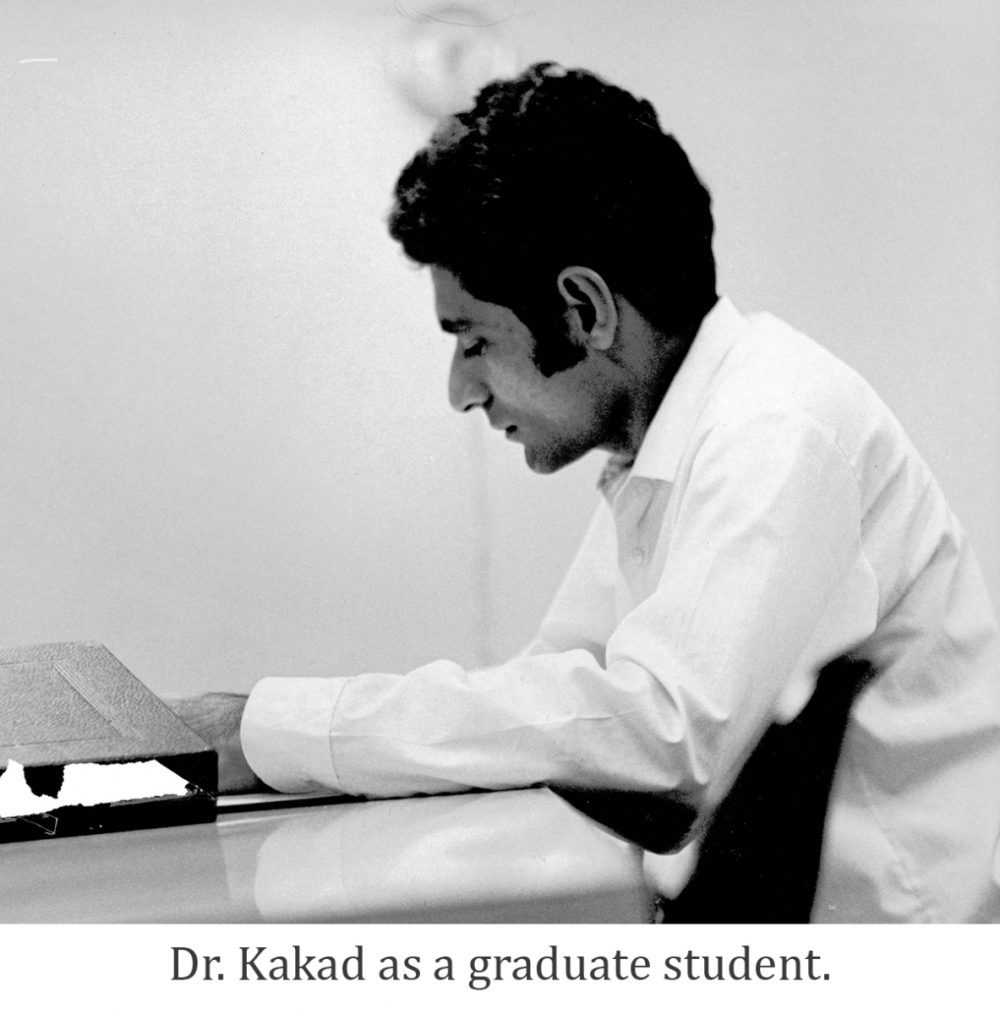
A faculty member who followed them in 1976 was Yogendra (Yogi) Kakad, who came from the University of Florida, where he had recently finished his Ph.D. and a year of post-doc research.
“I had an interview at another university” Kakad said, “and then on way back to Florida I stopped for an interview here with Burt Wayne, Snyder and others. It was a beautiful spring day and I fell in love with the place. The only drawback was there were no graduate programs.”
Kakad was offered a job here and at the other institution he had interviewed at, which was a major research university. “I sat with my advisor at Florida and asked for his thoughts,” Kakad said. “He said ‘Son, I’ll give you a piece of advice. Go to Charlotte. It’s an up-and-coming university. It’s going to be exciting. You’re going to be on the ground floor. You will develop the graduate programs, so go there.’ So, I came here to make a difference, to build a program.”
The electrical program was known as Engineering Analysis and Design at the time, and had an interdisciplinary quality. “The program was just right for me,” Kakad said. “And everyone was very kind to me. I initially thought I would help develop the graduate programs and then move on. But I kind of liked the place, I liked the university and I stayed.”
The university had about 6,000 students when Kakad first arrived and that number quickly grew to 9,000.
The development of the graduate program was accelerated in 1978, when IBM announced it was coming to the University Research Park. “I was working with Snyder on curriculum,” Kakad said, “which got very exciting when IBM was announced. We developed a lot of courses to teach its engineers. It was a very exciting time for me, I was building the master’s program, teaching four courses and continuing with my research on the weekends.”
UNC Charlotte began the cross-disciplinary Master’s of Science in Engineering program in 1979. “It was interesting that I had more graduate students then than I had 30 years later,” Kakad said. “I had 24 IBM employees in my class, so I started with 26 or 27 total graduate students. They were all part-time students. We started out quite strongly.”
Kakad taught UNC Charlotte’s first electrical engineering specific graduate course in 1980. He supervised the first master thesis, while also bringing in the first federally funded research grant in the department.
Kakad’s first child was born at the time he was teaching his first classes at UNC Charlotte. The university campus was the playground and second home of his children.
“My children grew up on campus,” he said. “They took their first steps here. We used to go to the old track to walk. They grew up here, because I was always working here on the weekends. But it was hard. I think I may have put in too many hours.”
All of the engineering programs were in the Smith Building in the 1970s and 1980, along with political science, geography and a physics. The facilities were a step backwards for Kakad, who even as a graduate student at Florida had his own office and his own telephone.
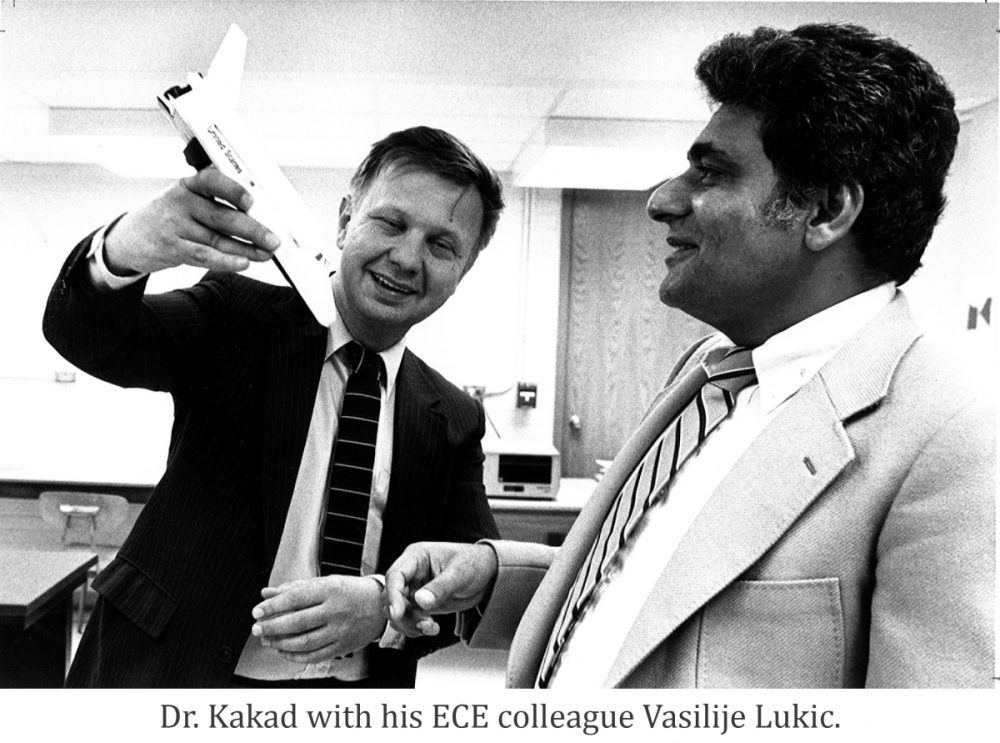
“When I came here they had an intercom system,” Kakad said. “You had a box in your office and they would call you from the Dean’s office and tell you there was a telephone call for you on the common phone. So, you would go take your call there with everyone listening to you. Eventually we got our own phones, but there was still only one line and the chairman could listen in at any time.”
With the engineering college being small, it had more of a closeness and family feel. There was an annual picnic for the faculty, staff and their families. Dean Snyder always held a Christmas party at his home.
“It was like a big family,” Kakad said. “In fact, our entire faculty could fit in one regular-sized classroom for faculty meetings. You knew everyone and you knew everyone’s family.”
In addition to teaching, doing research and developing programs, Kakad was always active in university governance. “I served on every possible committee on campus,” he said. “They included course and curriculum committees, engineering graduate committees, graduate council, faculty council, twice as COE faculty president, and once as the university faculty president. I served at faculty assembly at the Chapel Hill level for seven years. I was on every committee you could think of and it was very rewarding.”
Teaching the next generation of engineers, though, was the most rewarding part of his job, Kakad said. “A common thread I noticed was that many of our students had to undergo a lot of personal and family sacrifice to be able to go to college. They felt privileged to get the chance and they worked hard. I felt myself privileged to get to teach them.”
Kakad was still teaching in the Lee College of Engineering when this history was written in 2015. “I was too busy to look for anything better,” he said. “It has been very rewarding. My professor gave me the right advice about going to UNC Charlotte. I got to be part of very exciting times.”
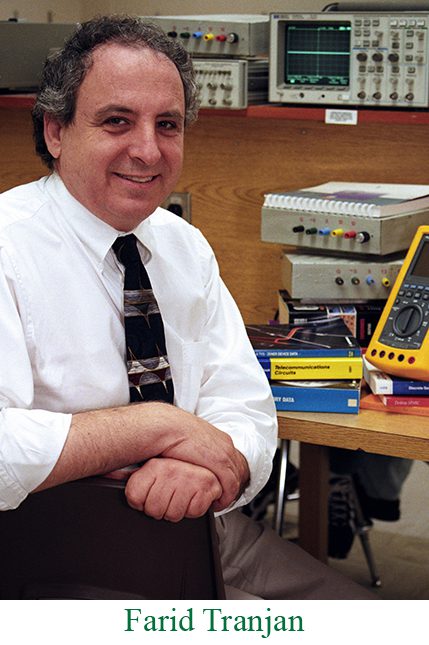
When Farid Tranjan came to the Electrical Engineering Department from Texas Instruments in 1985, the department was up to eight faculty members. Burt Wayne was department chair.
“We had about 450 students,” Tranjan said. “Some of the professors in the department were Rafic Makki, Silvia Middleton, Vasilije Lukic, Yogi Kakad, Bill Smith, Bob Coleman and Ed Nicollian.”
The university had recruited Nicollian to help build its new research program. Tranjan remembered Nicollian as a top researcher, and also as a heath enthusiast with an eye on his budget.
“In those days, you could get a meat, two vegetables and a side dish in the cafeteria for $1.90,” Tranjan said. “Nicollian was always proud of the fact that he ate there, because he was so cheap.”
Tranjan became department chair in 1992 and served in that capacity until 2004. His first action as chair was to change the name of the department to Electrical and Computer Engineering.
“We actually had the BS degree in Computer Engineering before the name change,” Tranjan said. “So, the new name better represented who we were.”
More faculty with education and backgrounds in computer engineering began coming to the department, including Jim Conrad in 2002.
“I was a project manager, software engineer and system engineer at Ericsson/Sony Ericsson for about six years,” Conrad said. “I had been in and out of academia and industry. I worked at IBM in Research Triangle Park while doing my master’s and Ph.D. at N.C. State from 1984 to 1992. I went to the University of Arkansas for three years after getting my Ph.D., back to RTP working for two startups, then to Ericsson and its handset division that created Sony/Ericsson, and I was teaching at N.C. State while working.”
Conrad’s combined interest in teaching and research brought him to UNC Charlotte. “I had met Rafic Makki at a conference and he urged me to apply,” Conrad said. “What drew me here was the balance between research and teaching.”
He served as undergraduate and associate chair of the department for three and a half years. During that time he contributed a lot to developing educational materials for courses, and he advised and graduated almost 100 master’s students.
“I had so many grad students, because my field was embedded systems,” Conrad said, “which was growing fast and I was one of few faculty working on it.”
The master’s students were looking to get their degrees as quickly as possible, so they could go get jobs at top companies. “I actually felt like I was contributing to the economic engine of the country by putting so many grad students into the workforce,” Conrad said. “They went out and were creating new technologies and products, which was good for everyone.”
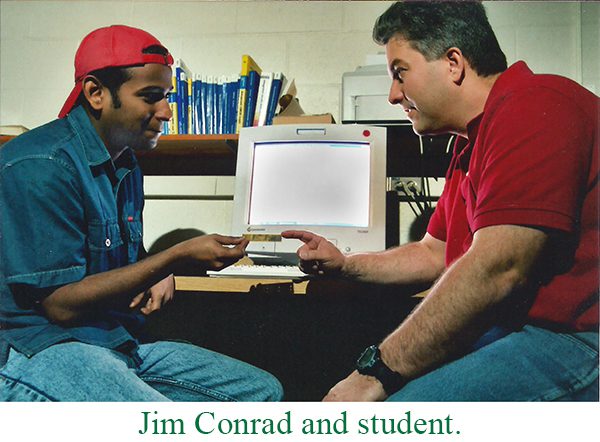
Conrad saw the electrical and computer engineering program grow in number of students and in facilities during his years at UNC Charlotte. “We were just in Smith and Cameron, and now look at us,” he said. “We moved to Woodward Hall, which was nice in terms office sizes, but we were squished in research lab space. Then we moved to EPIC and increased our space dramatically.”
The move to the EPIC building increased space for teaching and research, and opened a lot more laboratory space for students. One example was the embedded systems laboratory, which had space for robots, the computers needed to control them, and open work space for building projects and running experiments.
The hands-on building of projects was important to students’ learning experiences, and also to the department’s historical strength of entrepreneurship. “We had all sorts of entrepreneurial activity,” Conrad said. “As a department we had a professional practice course that Tranjan taught, which included students doing a business plan as part of class. On top of that we had a grant from Venturewell to deliver a concentrated technology innovation course. That course led to some senior design projects, which then went on to the students pursuing patents and forming their own companies.”
A number of Electrical and Computer Engineering Department faculty members also formed their own companies, including Tom Weldon, Ivan Howitt, Ed Stokes and Mehdi Miri.
As to why he stayed so long at UNC Charlotte, Conrad joked that tenure was a big reason. “I had been laid off three times when I worked in industry,” he said, “so the lure of tenure was pretty big. I stayed here for the balance of research and teaching, though. Throughout our careers we had the flexibility to mix in more or less of each, which always made it a rewarding place to work.”
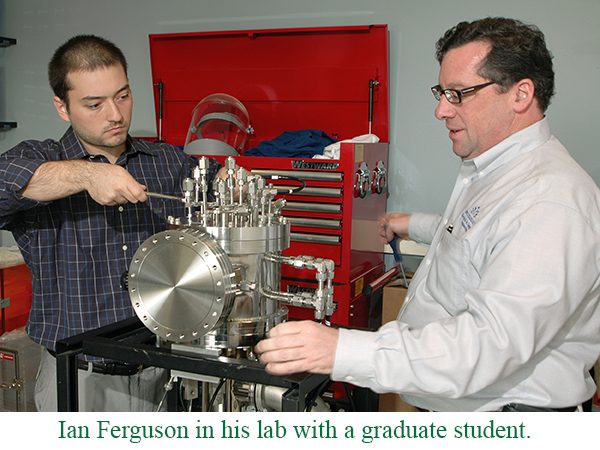
The tremendous growth of the department with new academic programs, new research opportunities and the opening of the EPIC building is what attracted Ian Ferguson to come in as Electrical and Computer Engineering Department chair in 2009. Ferguson had been at Georgia Tech and saw UNC Charlotte as a place of tremendous opportunity.
“One goal I had when I came was to make the students feel they were personally part of the electrical engineering department,” Ferguson said. “This started with having freshman projects for electrical and computer engineering students that got them into the clean room and laboratories. I wanted them to see what the department was all about and be able to figure out where the best fit for them was. I wanted them to have a sense of ownership and have sense of community.”
Ferguson was able to be involved in the design of the EPIC building and in the hiring of faculty to build the new energy programs. “What really inspired me here was desire for growth at UNC Charlotte and the opportunity to help take the institution to the next level,” he said. “It was a real privilege to be part of. I came at a good time.”